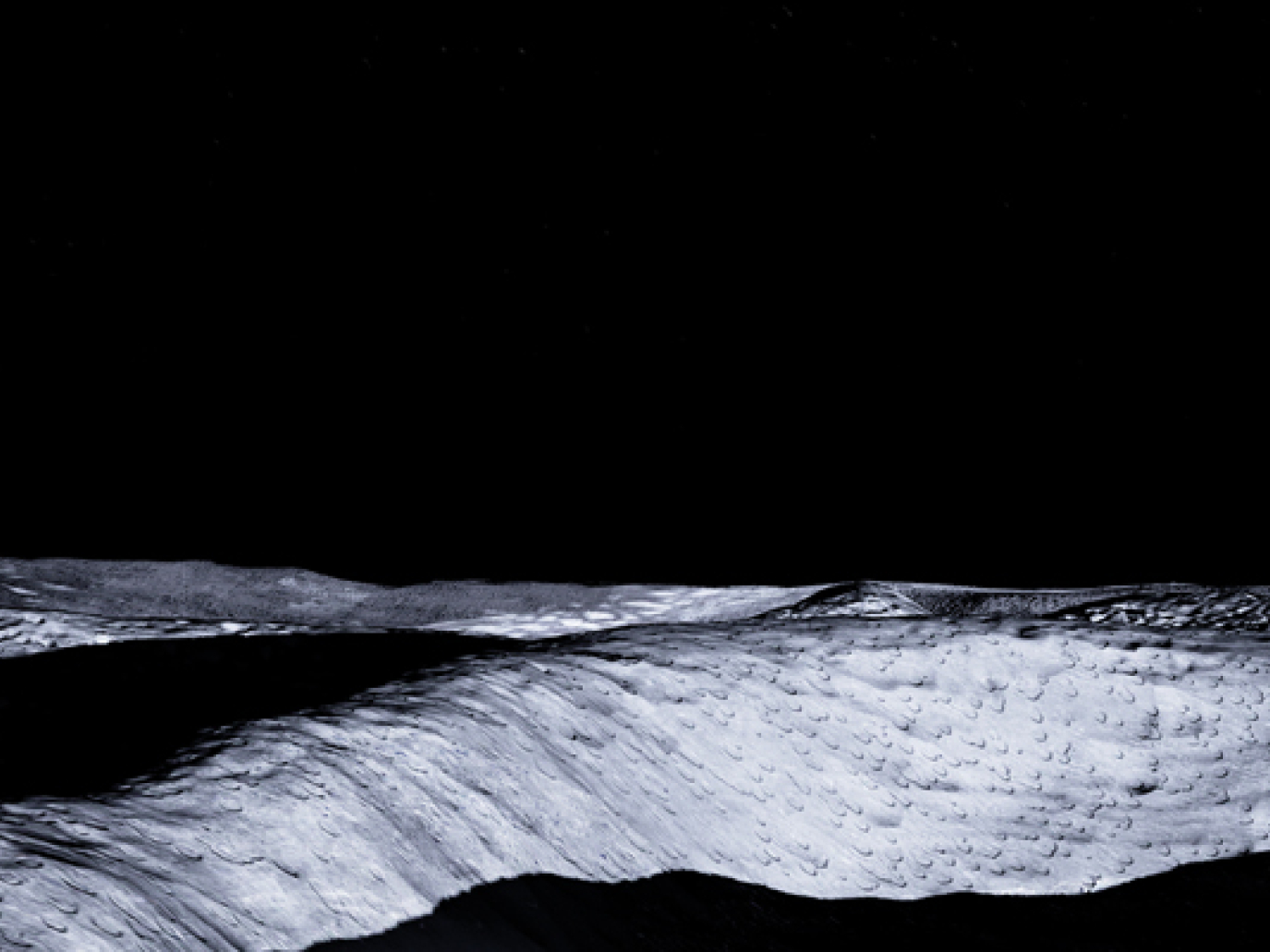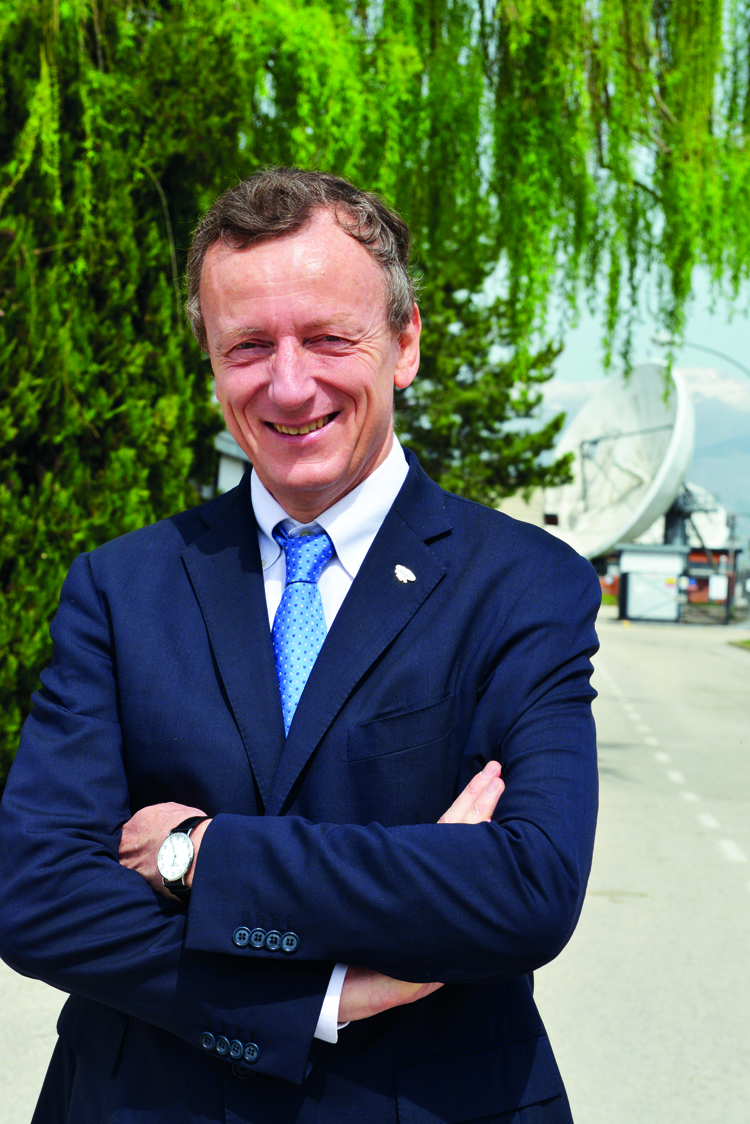
What happens when you work in an environment where there are no material supplies, the only resource is waste, oxygen is lacking, external conditions are extreme and the only energy is that of the stars? Easy. You use the resource that humanity has always possessed almost endless provisions of: talent. And if this environment is outer space, then the challenge is momentous. The Martian, directed by Ridley Scott, narrates the great challenge space engineers must face every day when they plan journeys into space, to orbital stations and to research centres in the deep cosmos. Or, even, when they begin creating future colonies on Mars, where one day humans could live in order to continue conquering space, exploring it as they seek new matters or even offering “out of this world” holidays. Obviously, space economy is not only an economic sector of vectors, ROVs (Remotely Operated Vehicles), remote-controlled vehicles and new satellites. It is also a great opportunity for creating future technologies which can support a sick planet, which has at its disposal increasing less raw materials and has a growing need to exploit renewable energy sources and promote efficiency.
Renewable Matter is launching a series of articles which investigate the direction of these investments and the cutting edge technologies which may one day come into our homes or become part of global productive industries. Let us begin with Italy, one of Europe’s players in the space economy sector which the government has decided to invest in, with 350 million Euros in funding going to the Italian Interministerial Economic Planning Committee for the development and cohesion fund for an Italian development plan. According to the minister of economic development, Carlo Calenda, this sector is one “of excellence for the Italian productive system.” But is it really? We spoke to the chairperson of the Italian Space Agency, Roberto Battiston, one of the most visionary minds on the scene, who is considering Mars and beyond.
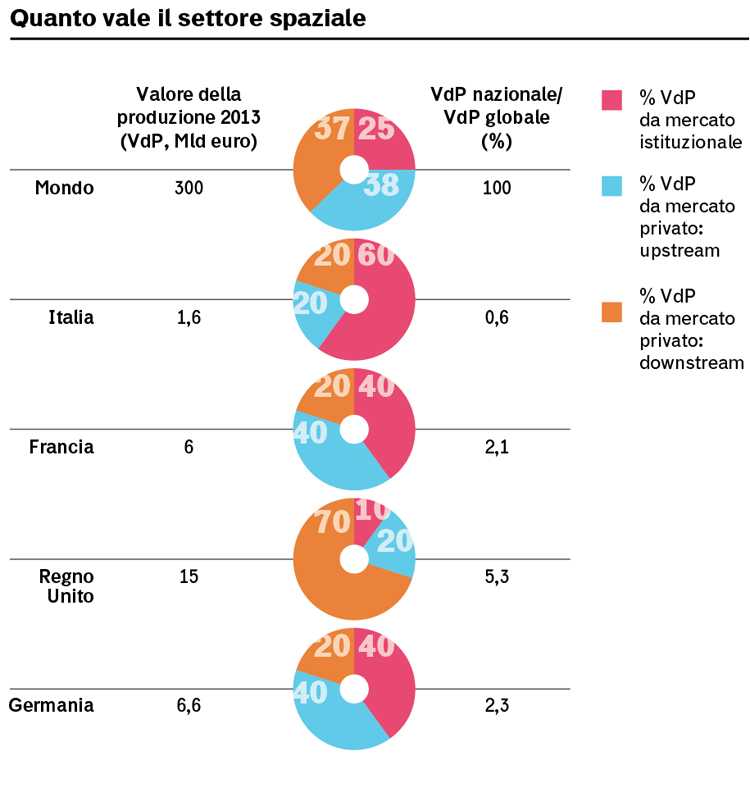
For many, the space economy is an “alien” concept, if you forgive the pun.
“The space economy should be considered from two points of view: one implies the passage from considering space activities, above all, in terms of its technological exploratory element, connected to an increase in knowledge and man’s investigative skills, as well as a vision of space as an environment where economic activity produces wealth. At the moment, the space sector has a global turnover of about €300 billion a year, of which 70-85% is connected to telecommunications. It is, indeed, a market economy. But the new entry of recent years regards the growing quantity of data that space manages to provide us regarding the Earth, not to mention the exchange of telecommunications data. In other words, we are producing a quantity of data originating from space, that is connecting with the new dot.com economy, which is increasingly connected to services and network management.”
It includes a technological element reminiscent of the green economy. These innovations used in space are considered the key to a future where material recovery and circularity are fundamental. Tell us more.
“There are two important aspects. Observing the Earth from space, one of the first things that leaps out at you is the weather and, above all, climate processes. Space observation helps us to better understand what our planet is experiencing and its climate evolution, allowing us to verify the effects of these processes and the actions implemented by different countries for containing and improving the environmental impact. This is a particular chapter of the space economy and space data use. There is also a second aspect. In space, there are endless resources available: there is solar energy but we do not have other materials other than those which we bring. The challenge is, thus, to transform energy into food, into power for moving quickly from one place to another, and into communication capacity and whatnot. Let us consider what goes on in an international space station, where people have been living continuously for 15 years. The challenge is to optimise resources, exploit the materials available and the energy arriving from the sun. Let us consider that the Earth’s raw materials are those which it already has and there are no more.”
However, the Earth is also a limited system like a spaceship. It is just much bigger.
“Yes, of course. There is only solar energy, because gas and oil are actually solar energy accumulated over the course of millions of years. The Earth is a closed system, very similar to that of a space station. Of course the figures are different: 7 billion people live on our planet and only 9 people would be on a space station. In space, the principle of a closed system is ever more evident: 95% water is recovered from urine and sweat, in a continuous cycle. Today, we throw organic waste into the atmosphere to burn it, however, if we had a farm in the space station (we have already tried to cultivate salad and flowers and we are getting set up for tomatoes), we could reuse it in a circuit which could exploit and reuse all the materials brought into space, using solar energy to transform it. Thus, it is a fantastic system for testing out extreme reuse of primary resources in the most advanced way.”
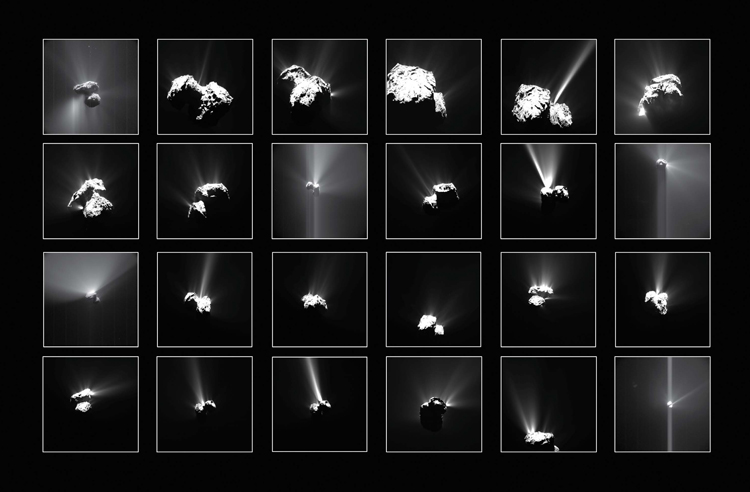 |
|
Comet 67P/C-G – ©ESA/Rosetta/OSIRIS/NavCam – CC BY-SA IGO 3.0
|
How does Italy rank in the space economy? Are we leaders or followers?
“In the space sector, we are an international power: the sixth country in the world in terms of space activities and the third in Europe, after France and Germany. And we have a 50-year-long tradition which covers the whole industry: from launch systems, like the San Marco launches at Malindi with General Broglio in the sixties, to the extremely important contributions provided to the international space station, whose residential infrastructures were produced in Turin. The COSMO-SkyMed constellation is the only one of its kind in the world. It allows the Earth to be monitored 24/7, both day and night, since, being radar, it sees through the clouds and also works in the dark. We have a wealth of extraordinary skills which we try to maintain and develop through the work of the Italian Space Agency. Today, the national space industry provides work for 6,500 employees and has a turnover of 1.7 billion. The challenge is to set upon external markets and many of these technologies are indeed on the market.”
How much potential for growth do you think there is?
“In principle, there is no real limit because it depends on the competitiveness that we manage to cultivate in the system. Unique products or competition between a couple of companies often derives from the space economy. For example, the Vega launch system (a rocket, editor’s note) which was a mainly-Italian production and is currently used two or three times a year by the European Space Agency. We believe it could be used in a market two or three times its size, if appropriately included in international agreements or even sold to non-European countries. The potential for growth is at least 100%. It depends on how much the Italian system, the government which invests in industries, plans this development model.”
More or less how many patents from the space economy world have become industrial distribution products?
“Too few. Italy does not tend to produce patents, neither at university level nor at industrial level. It is not in our DNA. At university and research centre level, the figures are negligible. Really very few. At industrial level, we are doing slightly better, but we do not have the systemic patenting strategy that northern countries very often have, as do the USA. Having said that, the way in which space evolves hardly ever involves buying patents from other companies. Rather, agreements are made and they involve sharing out activities, creating joint ventures and favouring the development of collaborations. All this is facilitated by a great deal of public funding, both at a national and an international level, in Italy, the United States and Russia.”
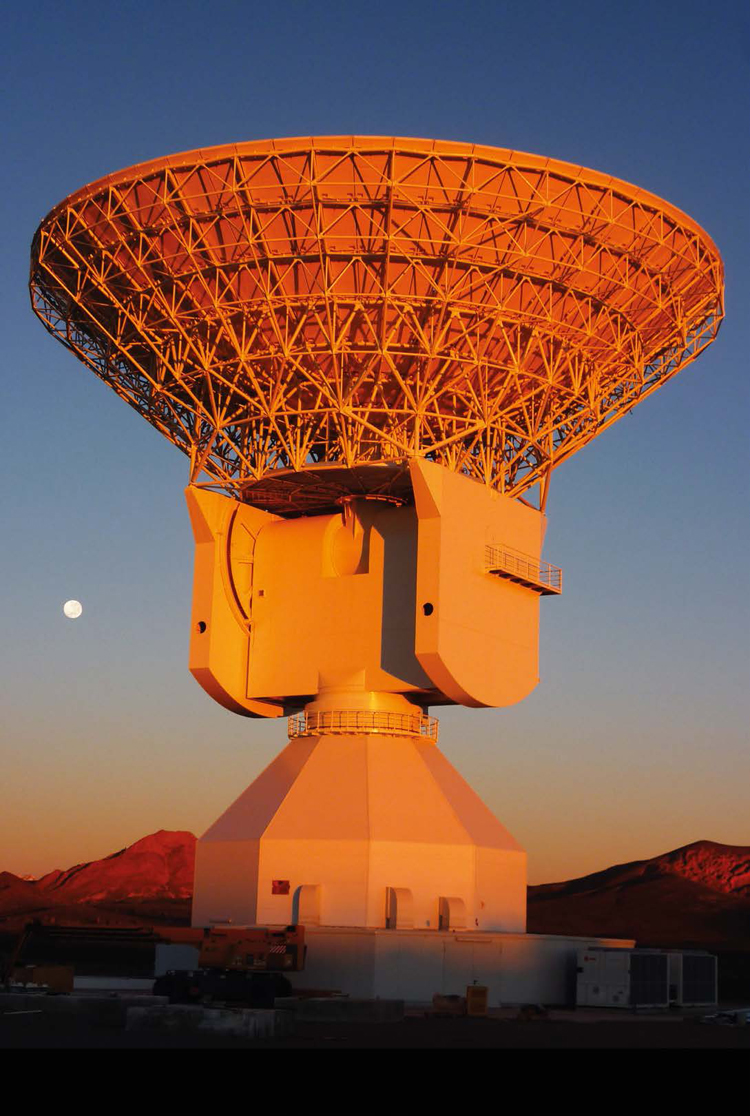 |
|
ESA’s Malargüe (Buenos Aires) tracking station – ©ESA/U. Kugel
|
New joint ventures reveal the increase in private partnerships. Just think of the Lavazza “espresso in space” project and the Virgin Galactic investments. What role will they play?
“Let us consider what is happening in America where the private citizens of the new economy based on the web and services are personally involved in space activity in order to boost their own businesses based on non-space matters. As these partnerships emerge, producing patents will become an increasingly more important strategy.”
Italy excels in the green economy, with great know-how and a high interest in the circular economy. Could space technologies make the difference in the renewable energy field, in material recovery, recycling, and reuse and in the study of new materials? Is a public-private round table needed, involving the space industry and the green industry?
“I think so. As the Italian Space Agency, we are trying to boost the process of technology transfer to other commercial sectors, both in terms of pure research and in terms of industrial prototyping. Over the past few months, we have set up the Ket-Lab, ‘Key Enabling Technologies Laboratory’, in Rome along with Consorzio Hypatia. We have already started making products aimed at marketing technologies deriving from aerospace research. Here are some examples. High-efficiency solar cells: the solar panels that we have to realise can achieve a 60% yield, while those we currently use on our roofs achieve 15-18%. They currently cost a lot but, as is always the case, once the technology is developed we can think about large-scale production processes which lower costs.”
As far as water is concerned, what inventions are in the pipeline?
“In the space station, as I said, 95% of water is recovered from sweat and urine. But when you are on a planet, even just the Moon, we literally have to be able to extract water from stone. Water is often chemically bound in very small quantities to a whole series of molecules present on the surfaces of planets. In order to be able to use it we must develop techniques which, from the Earth, we do not even consider, because there is so much water available.”
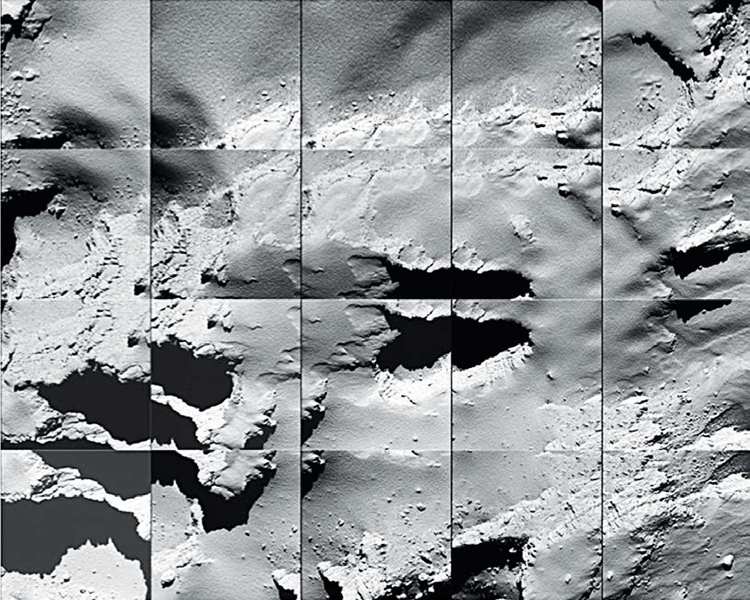 |
|
Comet 67P/C-G landing site – ©ESA/Rosetta/OSIRIS
|
From the spaceship to the home?
“Absolutely. All the possible and imaginable filters: in order to obtain drinking water from dirty water, in order to produce oxygen from an atmosphere full of CO2. This is all being researched and developed, also in Italy.”
What are the space economy’s production clusters?
“Turin, Milan where OHB is an important company, the Leonardo group, EX in the Milan area, the Tuscan cluster at Campi Bisenzio, the Lazio central hub, the Abruzzo hub at L’Aquila, the Italian Aerospace Research Centre and the Campania aerospace district. These are, above all, business networks.”
What is the most bizarre (and most Italian) technology that you have tested?
“I would say the coffee maker designed by Lavazza which can make coffee without gravity. It was more of a gadget for the media but it provided a lot of visibility for the space sector. It was a first: we used the space and international space station brands intelligently along with the national competences to support a process which then, in the end, will provide a direct, economic benefit. However, the space economy has only just begun. It will be a great journey through the cosmos, to save our planet too.”
Key Enabling Technologies Laboratory, ketlab.it
Top image: Temple atop Shackleton Crater (Moon) – ©Jorge Mañes Rubio. Spatial design & visualisation in collaboration with DITISHOE ditishoe.com


